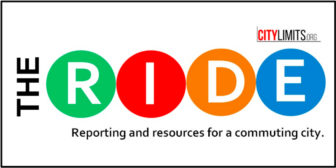
Any Cortes
The 7 train stop at Court Square is just one of several points of access to the proposed new Amazon site.
This story was produced through the City Limits Accountability Reporting Initiative For Youth (CLARIFY), City Limits’ paid training program for aspiring public-interest journalists.
To test out what a future Amazon worker’s potential subway commute might be like, City Limits rode from Manhattan to the Long Island City waterfront site where the company’s headquarters is planned. Starting just after 8 a.m. in Chelsea—one of the neighborhoods that’s seen the largest number of new housing units since 2000, according to NYU’s Furman Center—a reporter caught the train at 14th Street and 7th Avenue, where the first uptown 2 train was a bit too crowded to board. About three minutes later, a 3 train arrived with plenty of room to spare, heading uptown at about 8:08 a.m.
The 3 train pulled into the Times Square station at 8:14 a.m., where the reporter then transferred to a Queens-bound 7 train about four minutes later. The 7 itself wasn’t very crowded, with passengers filling up only about every other seat in one particular car. The train got to the Vernon Boulevard-Jackson Avenue station in Hunters Point at 8:23 a.m., where the arrivals platform was more or less empty, though a steady line of people could be seen heading into the Manhattan-bound side of the station.
From there, it’s about a 12 minute walk up Vernon Boulevard to the site of the future Amazon headquarters. The route includes the busy commercial stretch of Vernon, past shops, bars and restaurants, but becomes more industrial as you head north, where landmarks include a vacant warehouse and a taxi garage. Anable Basin, the East River inlet between 46th Avenue and 44th Drive around which the Amazon campus is expected to be built, is home to more warehouses, a shuttered restaurant, a Department of Education facility and a waterfront bar.
So, even having missed a train, this reporter arrived at her imaginary high-tech workplace by 8:35 or so. Granted, City Limits was just one imaginary worker – our 24,999 or more Amazon colleagues were not in the equation. The impact on the transit system will depend, of course, on where those workers live. Our commute from Manhattan out to western Queens ran counter to the morning rush. Had we started elsewhere in Queens as part of the a.m. tide, the ride would have been different.
In addition to the 7 train station at Vernon Boulevard-Jackson Avenue, employees at the future location will be a short walk to the NYC Ferry landing in Gantry Plaza State Park, and about a 10-12 minute walk to Court Square, where they could catch the G, E, M and 7 trains.
Since Amazon announced Queens as one of the locations for their future second headquarters, subway commuters have been expressing their concerns about the deal, with residents worried how the influx of new people the site’s expected to bring could impact their local train lines.
“I’m afraid to think about that,” says Long Island City resident Kathleen O’Brien, 33, about the possible increase in overcrowding. “Right now, I feel the 7 is at capacity because of what it looks like at rush hour. So I’m nervous to think about all these extra people that are coming.”
O’Brien used to live in Seattle, so she saw firsthand the impact Amazon had on the city. “There’s a lot of homelessness and they’re very divided from the community. They kind of robbed the area of culture,” she says.
Arifa Mim, a frequent 7, R, and M train rider, says current train service in the area is already poor.
“Sometimes it will [be] so crowded in train cars breathing becomes difficult,” she says. “Other times a train will be so delayed that I have to prepare an alternate route.”
The MTA, however, says the system can handle the potential uptick in riders. In an email, a spokesman for the agency pointed to the recent installation of Communications-Based Train Controlalong the 7 line, which increases capacity and reliability; they plan on upgrading the E/F/M/R corridor too.
Other Queens subway lines will be seeing additional service beginning in April, as part of a plan to accommodate the L train shutdown: the 7 is getting 14 additional round trips per day, the G is getting 62, the M is getting 16, the F is getting 12, and E is getting 26, according to the MTA.
The agency expects Amazon commuters will use several different subway lines, spreading out their impact, while some may opt instead to walk, bike or take the LIRR. Those coming from Brooklyn or Manhattan during peak rush hours would find themselves traveling in the reverse direction of most commuters, when crowds are less of an issue. The MTA will monitor the impact and adjust schedules if needed, according to a spokesman.
Despite the MTA’s reassurances, some Queens riders remain concerned.
“Because I live so close to the area I feel overwhelmed,” says Melaney Fajardo, a 17-year-old high school senior who relies on the 7 train to get to and from school. “It will greatly affect how I will have to manage my time not only during weekdays but weekends.”
Indeed, even if the entire system is capable of absorbing the Amazon riders (if all 25,000 workers took the subway, it’d boost daily average weekday ridership by about one-half of one-percent), the impact—good, bad or both—is likely to be felt keenly at local stations and by long-time local riders. The Vernon Boulevard stop on the 7 train was already one of the city’s busiest, with 4.8 million riders in 2017, the 100th busiest of the city’s 424 stations. Court Square ranked 59th, with more than 7 million.










One thought on “Imagining an Amazon Worker’s Subway Ride”
Not all 25k Amazon employees are going to be taking the local subways/buses to work. Many of the suburban employees will opt to drive in to their jobs. I hope that the Amazon buildings will include some parking facilities for employees and visitors.